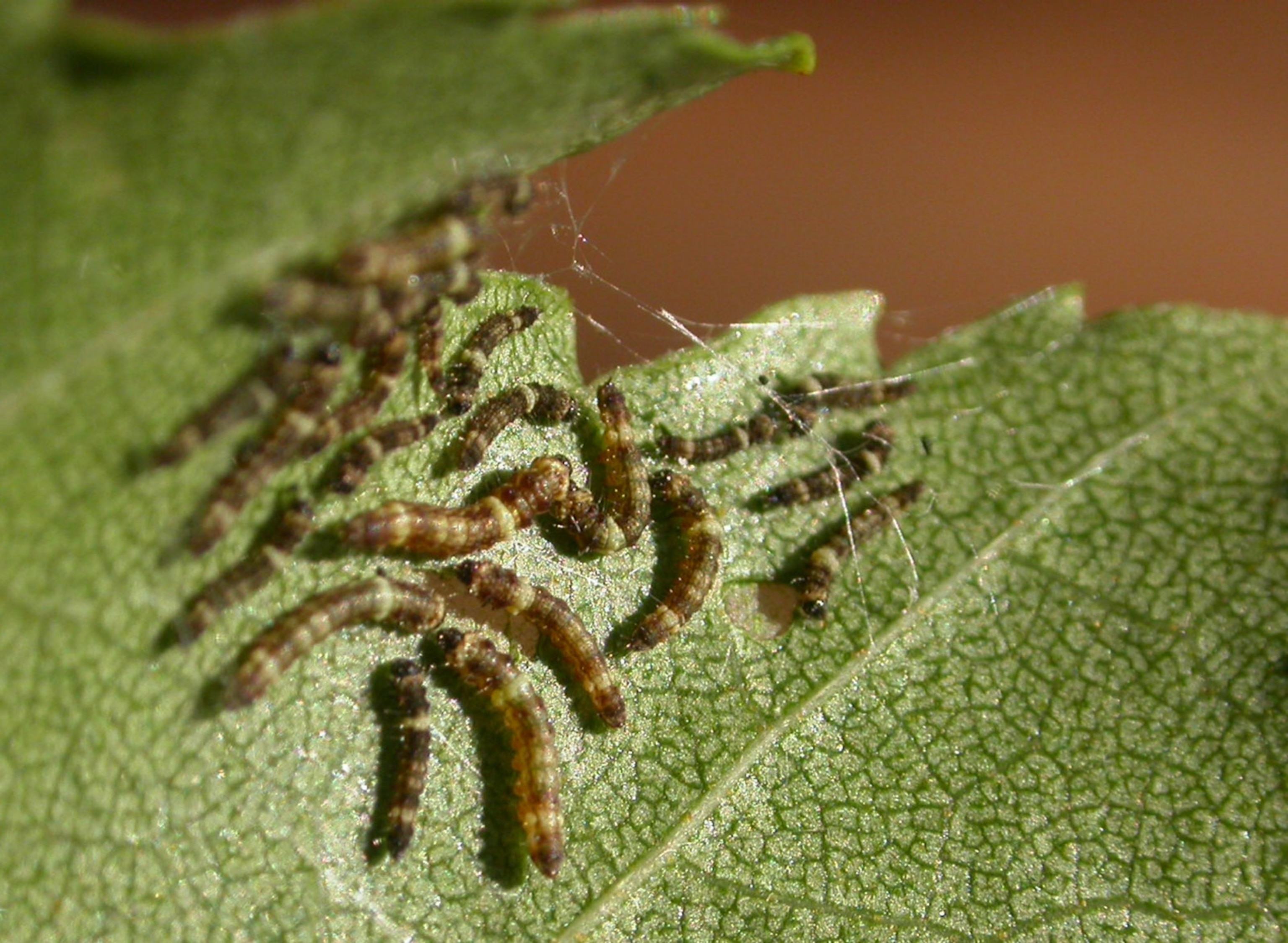Caterpillars Drum Their Anuses To Find New Friends
It’s the first evidence that the insects rely on vibrations to gain new buddies, new research suggests.
When it comes to finding new friends, this caterpillar busts its butt—literally.
Scientists already knew that masked birch caterpillars (Drepana arcuata) rub hairs on their rear ends against a leaf to create vibrations.
But new research, not yet published, suggests that the pepper grain-size insects use so-called anal drumming to beckon other young caterpillars to join their silken shelters. (See "Giant Sea Cucumber Eats With Its Anus.")
Woven onto birch leaves, these cocoons give the North American caterpillars a safe place in which to mature. But many caterpillars are needed to spin the silk and generally maintain their hiding place—hence the need for recruits.
Listen to the anal drumming.
It’s the first evidence that caterpillars rely on vibrations to form social groups, says Jayne Yack, a biologist at Carleton University.
“If you put your ear up to the leaf, you would not hear anything,” says Yack, who presented her research this week at the International Congress for Neuroethology in Montevideo, Uruguay.
“But if you use a device called a laser vibrometer, which detects very small vibrations, you hear this crazy rumbling sound. They actually sound like lions!”
Caterpillar Chit-Chat
Masked birch caterpillars, which go through five developmental stages, live in the communal silken shelters for the first two. When they molt into the third stage, they move out to live solo.
Once on their own, the bugs vibrate to signal their territory to competing caterpillars, Yack and colleagues have previously observed.
Along with anal drumming and scraping, the caterpillars vibrate via their mouthparts, either by drumming or scraping them from side to side on the leaf.
What was puzzling at first, Yack says, is the young, social caterpillars also make complex vibrations—talking with their butts even when they were alone.
“When feeding, they go, ‘Chomp, chomp, chomp, anal scrape. Chomp, chomp, chomp, anal scrape,’” Yack says.
“And when they are building a shelter, they will work some and then do a buzz scrape.” (Read "Spiders Listen to Their Webs.")
For her research, Yack took young caterpillars from the wild into the lab and placed them on sprigs of birch leaves. She and her colleagues then recorded the insects' vibrations and behaviors.

When a visiting caterpillar wandered into the vicinity of a resident caterpillar (one that has begun to build a shelter and feed), the resident increased its anal and mouthpart vibrations.
The closer the visitor came, the more signals the resident made, Yack and colleagues' research shows.
Supporting their theory, visiting caterpillars are more likely to join a resident that makes louder, more complex vibrations.
When we start to record more insects at different life stages, we are going to see a whole vibratory landscape.Jayne Yack, Carleton University
“We think these tiny caterpillars have a really sophisticated signaling repertoire, and recruitment is just one part of that language,” says Yack. (Read "Plants Listen for Hungry Caterpillars, First-of-Its-Kind Study Suggests.")
For instance, once the visitor joins the silken shelter, the insects continue using vibrations to communicate with each other about feeding and maintaining the shelter.
Good Vibrations
The research is a major contribution toward understanding how animals use vibrations to talk to one another, says Peggy Hill, a biologist at the University of Tulsa who was not involved in the new experiment.
“The current estimate is that at least 200,000 species of insects communicate" by using objects to make vibrations, says Hill. The technique is also seen in mammals, amphibians, and even some fish.
What's more, it's likely been around a while—maybe even 230 million years, she says. (Also see "How the Scorpion Lost Its Tail [And Its Anus].")
And science is just beginning to catch on.
“When we start to record more insects at different life stages," Yack says, "we are going to see a whole vibratory landscape."





